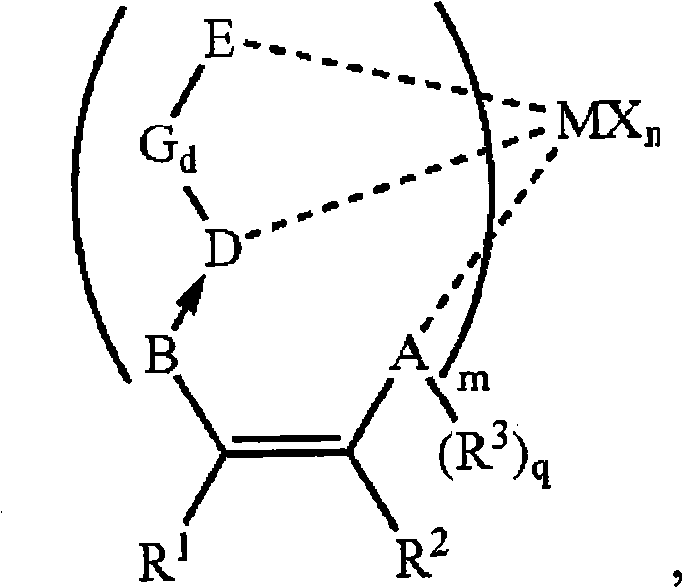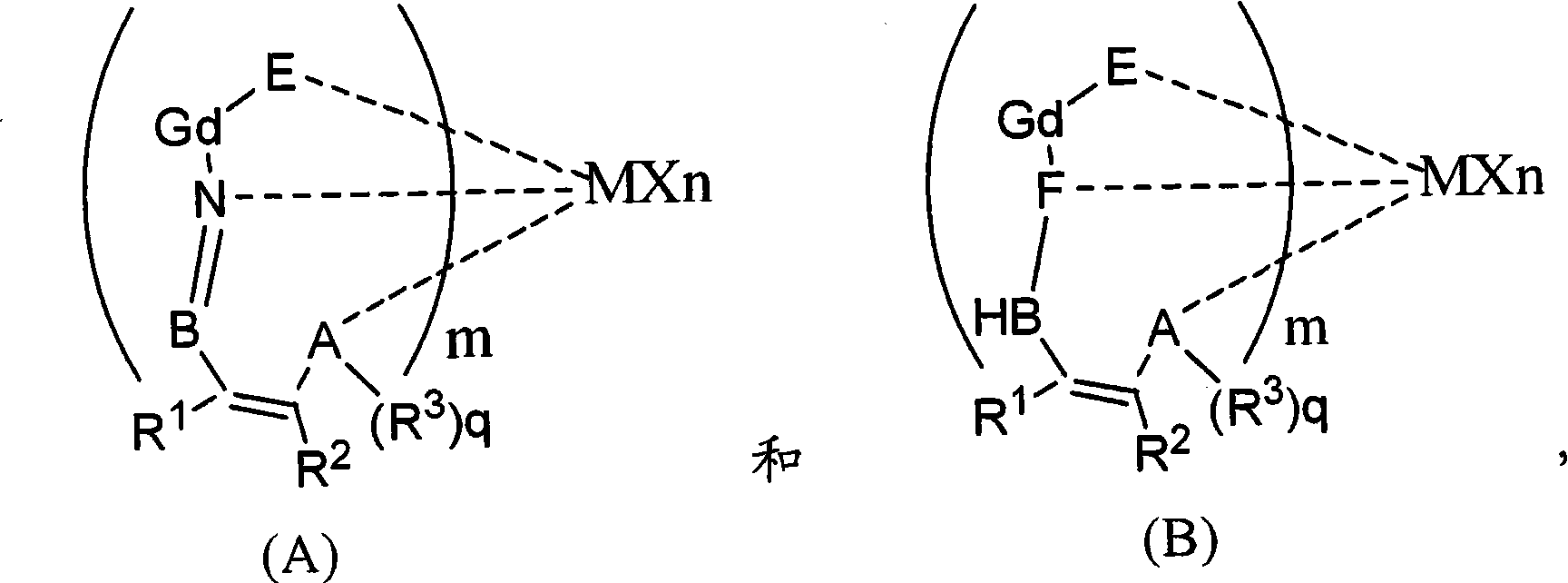Supported non-metallocene catalyst, preparation method and application
A non-metallocene, supported technology, applied in the production of bulk chemicals and other directions, can solve the problems of small variation, limit the performance of non-metallocene catalysts, and limit the industrial large-scale application of supported non-metallocene catalysts, and achieve the preparation method. simple effect
- Summary
- Abstract
- Description
- Claims
- Application Information
AI Technical Summary
Problems solved by technology
Method used
Image
Examples
preparation example Construction
[0099] The invention relates to a preparation method of a supported non-metallocene catalyst, comprising the following steps: dissolving a magnesium compound in a first solvent to obtain a magnesium compound solution; Contacting with the first non-metallocene complex to obtain a first mixed slurry; directly drying the first mixed slurry to obtain a composite carrier; reacting a chemical treatment agent selected from Group IVB metal compounds with the composite carrier , the step of obtaining a modified composite carrier; contacting the second non-metallocene complex with the modified composite carrier in the presence of a second solvent to obtain a second mixed slurry; and directly drying the second mixed slurry to obtain The step of the supported non-metallocene catalyst.
[0100] The magnesium compound will be specifically described below.
[0101] According to the present invention, the term "magnesium compound" refers to an organic or inorganic solid anhydrous magnesium-c...
Embodiment 1
[0331] The magnesium compound adopts anhydrous magnesium chloride, and the first and second non-metallocene complexes adopt the structure For the compound, the first solvent is xylene, and the porous carrier is silicon dioxide, that is, silica gel, the model of which is ES757 of Ineos Company. First, the silica gel is continuously calcined at 600° C. for 4 hours in a nitrogen atmosphere to be thermally activated. The IVB chemical treatment agent adopts titanium tetrachloride (TiCl 4 ), the second solvent adopts dichloromethane.
[0332] Weigh 5 grams of magnesium compound, add it to the first solvent, then add the first non-metallocene complex, dissolve completely at room temperature to obtain a magnesium compound solution, then add a heat-activated porous carrier, and stir for 2 hours to obtain the first The slurry is mixed, then uniformly heated to 90° C., and directly vacuum-dried to obtain a composite carrier.
[0333] Add the prepared composite carrier to the hexane so...
Embodiment 2
[0338] Basically the same as Example 1, but with the following changes:
[0339] Before reacting the chemical treatment agent with the composite support, the composite support is pretreated with a triethylaluminum co-chemical treatment agent to obtain a pretreated composite support.
[0340] That is, the composite carrier is added to the hexane solvent, and then the auxiliary chemical treatment agent triethylaluminum (concentration is 0.88mol / L, hexane solution) is slowly added dropwise, stirred at 60°C for 2 hours, filtered, washed with hexane for 3 times, 60ml each time, and finally vacuum-dried at 60°C to obtain a pretreated composite carrier. The molar ratio of the magnesium compound to the auxiliary chemical treatment agent is 1:0.2.
[0341] Supported non-metallocene catalysts are designated CAT-2.
PUM
 Login to View More
Login to View More Abstract
Description
Claims
Application Information
 Login to View More
Login to View More - R&D
- Intellectual Property
- Life Sciences
- Materials
- Tech Scout
- Unparalleled Data Quality
- Higher Quality Content
- 60% Fewer Hallucinations
Browse by: Latest US Patents, China's latest patents, Technical Efficacy Thesaurus, Application Domain, Technology Topic, Popular Technical Reports.
© 2025 PatSnap. All rights reserved.Legal|Privacy policy|Modern Slavery Act Transparency Statement|Sitemap|About US| Contact US: help@patsnap.com



